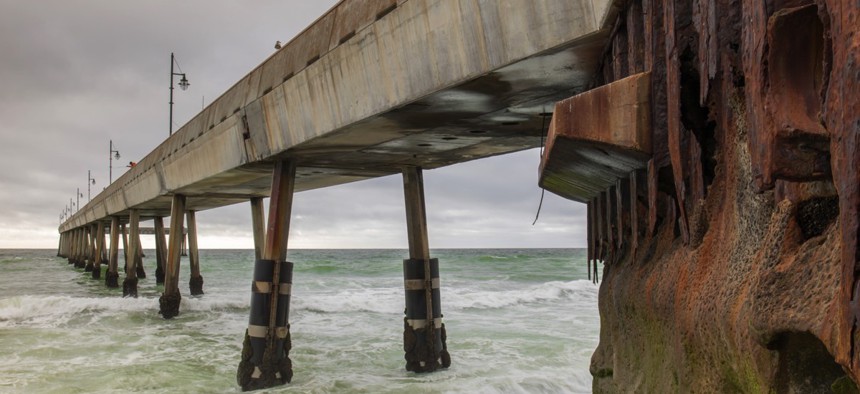Flood Resilience Challenge Yields the South Bay ‘Sponge’

Pacifica, California

Connecting state and local government leaders
“One thing that was really evident: Even people who are following closely are not totally aware of the flood risks that we have in the [San Francisco] Bay Area.”
Tasked with shoring up the South Bay against flooding from the upland watershed and San Francisco Bay, a group of urban designers are seeking to turn the subregion into a “sponge.”
One of nine teams formulating solutions to sea level rise in the Bay Area during the year-long Resilient by Design challenge, the collection of volunteers dubbed the Field Operations Team envision a flood protection strategy reliant on nature.
By connecting remnant intertidal marshlands, restored Salt Ponds and newly constructed wetlands in San Mateo and Santa Clara counties, vulnerable coastal cities in the South Bay can avoid serious economic losses and environmental damage.
“They created this whole way of talking about this as a sponge, showing how wetlands can absorb water to reduce flood risk,” Amanda Brown-Stevens, Resilient by Design managing director, told Route Fifty.
In that way, the team raised awareness about the dangers of continuing to build into the bay, instead of turning construction like underutilized parking lots into a natural buffer.
The eight other design teams similarly focused on boosting resilience to reduce flood risk in their respective regions and gave final presentations on their approaches in May.
“One thing that was really evident: Even people who are following closely are not totally aware of the flood risks that we have in the Bay Area,” Brown-Stevens said. “This challenge is not coming after a big flood event, so one piece has been connecting and educating people.”
Education may involve tools developed by the designers, like games, maps and other visuals illustrating flood risk.
A central takeaway from the challenge was that conversations about transportation infrastructure are intertwined with those involving stormwater management, Brown-Stevens said.
“Retreating” from the bay by replacing parking lots with parks will require experimentation around living with water, she added, and cities collaborating where they’re often used to making decisions unilaterally.
“By continuing this important work, it’s our hope that other parts of the country and around the world will follow in the Bay Area’s footsteps, spurring innovation, bringing essential voices to the table for collaborative problem solving and building resilience before disaster,” said Allison Brooks, executive director of the Bay Area Regional Collaborative, in a statement. “Each team’s proposal illuminates both immediate and longer-term ways we can safeguard the Bay Area and make it more environmentally, socially and economically resilient.”
The next step is finding financing and government support to move forward with the teams’ ideas.
More than 50 community groups were engaged throughout the course of the challenge, and regional champions—elected officials included—now will need to be identified to try to make the projects a reality.
“At the state level there’s starting to be more funding for climate adaptation planning,” Brown-Stevens said. “That’s something cities had previously not thought about.”
Dave Nyczepir is a News Editor at Government Executive’s Route Fifty and is based in Washington, D.C.

NEXT STORY: Study Casts Doubt on Feasibility of Boston’s Proposed Flood Barrier





